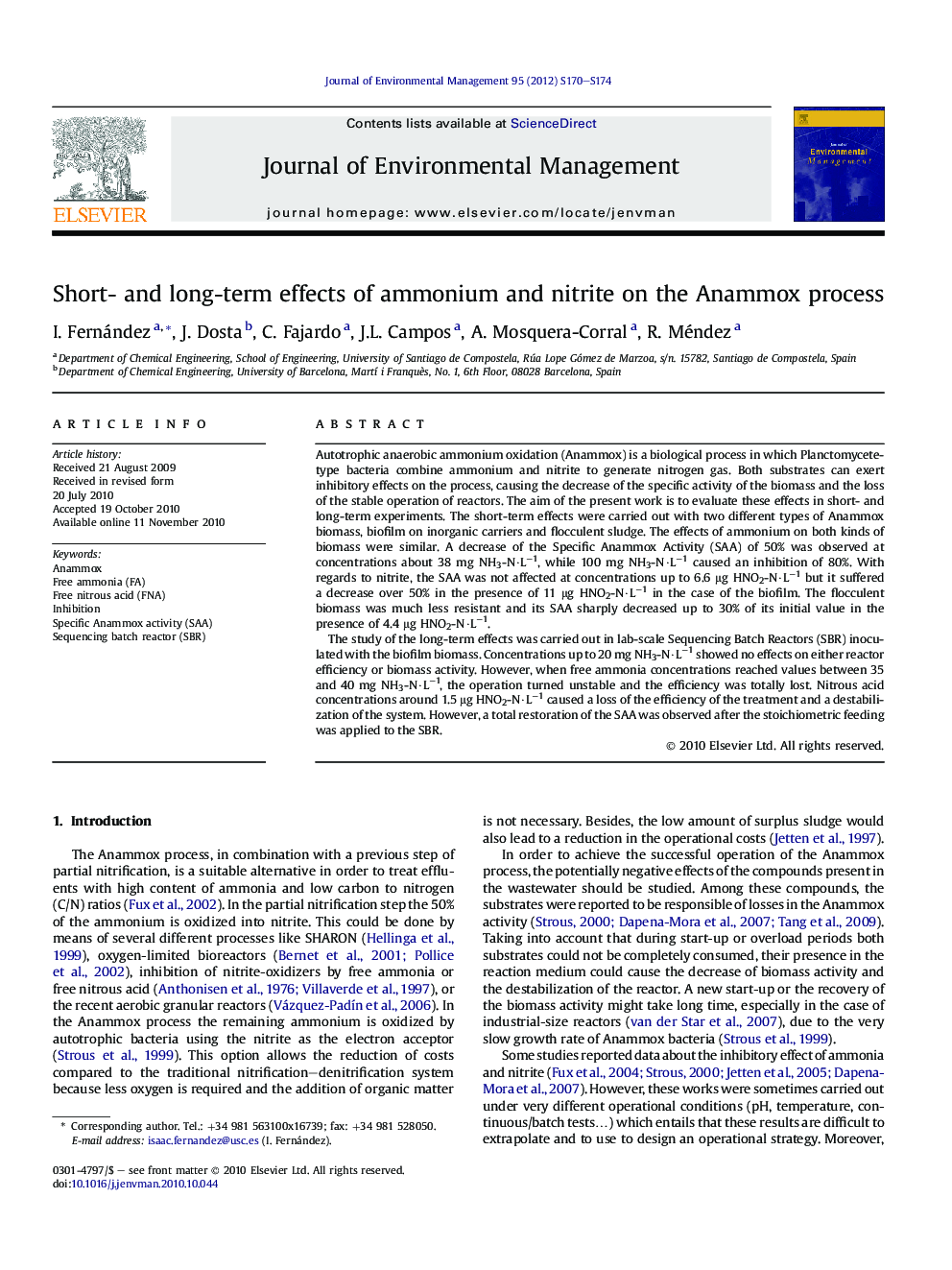| Article ID | Journal | Published Year | Pages | File Type |
|---|---|---|---|---|
| 1057048 | Journal of Environmental Management | 2012 | 5 Pages |
Autotrophic anaerobic ammonium oxidation (Anammox) is a biological process in which Planctomycete-type bacteria combine ammonium and nitrite to generate nitrogen gas. Both substrates can exert inhibitory effects on the process, causing the decrease of the specific activity of the biomass and the loss of the stable operation of reactors. The aim of the present work is to evaluate these effects in short- and long-term experiments. The short-term effects were carried out with two different types of Anammox biomass, biofilm on inorganic carriers and flocculent sludge. The effects of ammonium on both kinds of biomass were similar. A decrease of the Specific Anammox Activity (SAA) of 50% was observed at concentrations about 38 mg NH3-N·L−1, while 100 mg NH3-N·L−1 caused an inhibition of 80%. With regards to nitrite, the SAA was not affected at concentrations up to 6.6 μg HNO2-N·L−1 but it suffered a decrease over 50% in the presence of 11 μg HNO2-N·L−1 in the case of the biofilm. The flocculent biomass was much less resistant and its SAA sharply decreased up to 30% of its initial value in the presence of 4.4 μg HNO2-N·L−1.The study of the long-term effects was carried out in lab-scale Sequencing Batch Reactors (SBR) inoculated with the biofilm biomass. Concentrations up to 20 mg NH3-N·L−1 showed no effects on either reactor efficiency or biomass activity. However, when free ammonia concentrations reached values between 35 and 40 mg NH3-N·L−1, the operation turned unstable and the efficiency was totally lost. Nitrous acid concentrations around 1.5 μg HNO2-N·L−1 caused a loss of the efficiency of the treatment and a destabilization of the system. However, a total restoration of the SAA was observed after the stoichiometric feeding was applied to the SBR.
